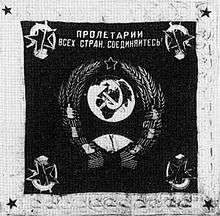War trophy


In ancient Greece and Rome, military victories were commemorated with a display of captured arms and standards. A trophy (from the Greek tropaion) was originally a war memorial assembled from such items on a battlefield. The Roman triumph also displayed these items as well as cultural objects, which later came to be called war trophies. Body parts of slain enemies have sometimes served as trophies since antiquity, in a practice called human trophy collecting. The recovery of Roman eagles taken as trophies by enemy forces sometimes inspired years of added warfare.

In more recent times, it has been common for soldiers to return home with souvenirs, such as enemy weapons and flags, while larger military items captured in battle, particularly weaponry such as machine guns and artillery pieces, became the property of the state to which the soldiers responsible for the capture belonged.[2]
In the 20th century, the victorious alliance states removed large quantities of property, including cultural objects.[3] After the First World War, the Treaty of Versailles authorized the removal of large amounts of property from Germany, which it termed "reparations".
After the Second World War, the Potsdam Conference authorized the removal of certain property from Germany, such as the merchant marine fleet. Germany, during the war, had removed large quantities of property from the countries that it had occupied. In some cases, for example the Soviet "trophy brigades", official looting was euphemised as the taking of "trophies".
Cultural objects
Article 56 of the Hague Convention of 1907,[4] stated:
The property of municipalities, that of institutions dedicated to religion, charity and education, the arts and sciences, even when State property, shall be treated as private property.
All seizure of, destruction or wilful damage done to institutions of this character, historic monuments, works of art and science, is forbidden, and should be made the subject of legal proceedings.
However, the article was not much respected during the remainder of the century.
In 1954, a further convention was signed at the Hague: Convention for the Protection of Cultural Property in the Event of Armed Conflict, and two protocols have strengthened its force.[5]
Many works of art moved from their pre-war locations during the turmoils of the 20th century. UNESCO, the United Nations agency responsible for culture has been seeking to resolve issues relating to cultural objects displaced in connection with the Second World War.[6] However, the conference in Spring 2007 failed to reach a consensus on a draft non-binding declaration.[7]
See also
| Wikimedia Commons has media related to War trophies. |
- War loot
- Prize of war
- Prize (law)
- Trophy of arms
- Trophy (architectural)
- Helmet and spurs of Saint Olaf
References
- ↑ Trofeos de la Reconquista de la Ciudad de Buenos Aires en el Año 1806 (in Spanish). Buenos Aires: Litografía, Imprenta y Encuadernación de Guillermo Kraft. 1882.
- ↑ To The Victor Belongs the Spoils provides an academic perspective of Australian war trophy practices during the twentieth century. Major R. S. Billett, "War Trophies from the First World War", 1999, provides an illustrated history of Australia's World War One trophies of war, while A. P. Fox, "Silent Sentinels: The War Trophies of the First New Zealand Expeditionary Force in War and Peace", B. A. Hons, Otago University 1987, examines the story of New Zealand's World War One war trophy collection (available on-line here: http://www.kiamatetoa.com/wartrophies/landingPage.html).
- ↑ Some of these removals, are listed in Looted art.
- ↑ Avalon Project – Yale Law School.
- ↑ 1954 Convention – Summary on UNESCO website
- ↑ This followed a recommendation from the Intergovernmental Committee for Promoting the Return of Cultural Property to its Countries of Origin or its Restitution in case of Illicit Appropriation (Paris, 7–10 February 2005) referred to in No.45 of Resolutions of UNESCO General Conference, October 2005.
- ↑ Paper (117 X 17) for the agenda of the UNESCO General Conference "REPORT BY THE DIRECTOR-GENERAL ON THE PREPARATION OF A DRAFT DECLARATION OF PRINCIPLES RELATING TO CULTURAL OBJECTS DISPLACED IN CONNECTION WITH THE SECOND WORLD WAR" (Paris, 17 September 2007).